The Best Non-Toxic Face Sunscreen Guide
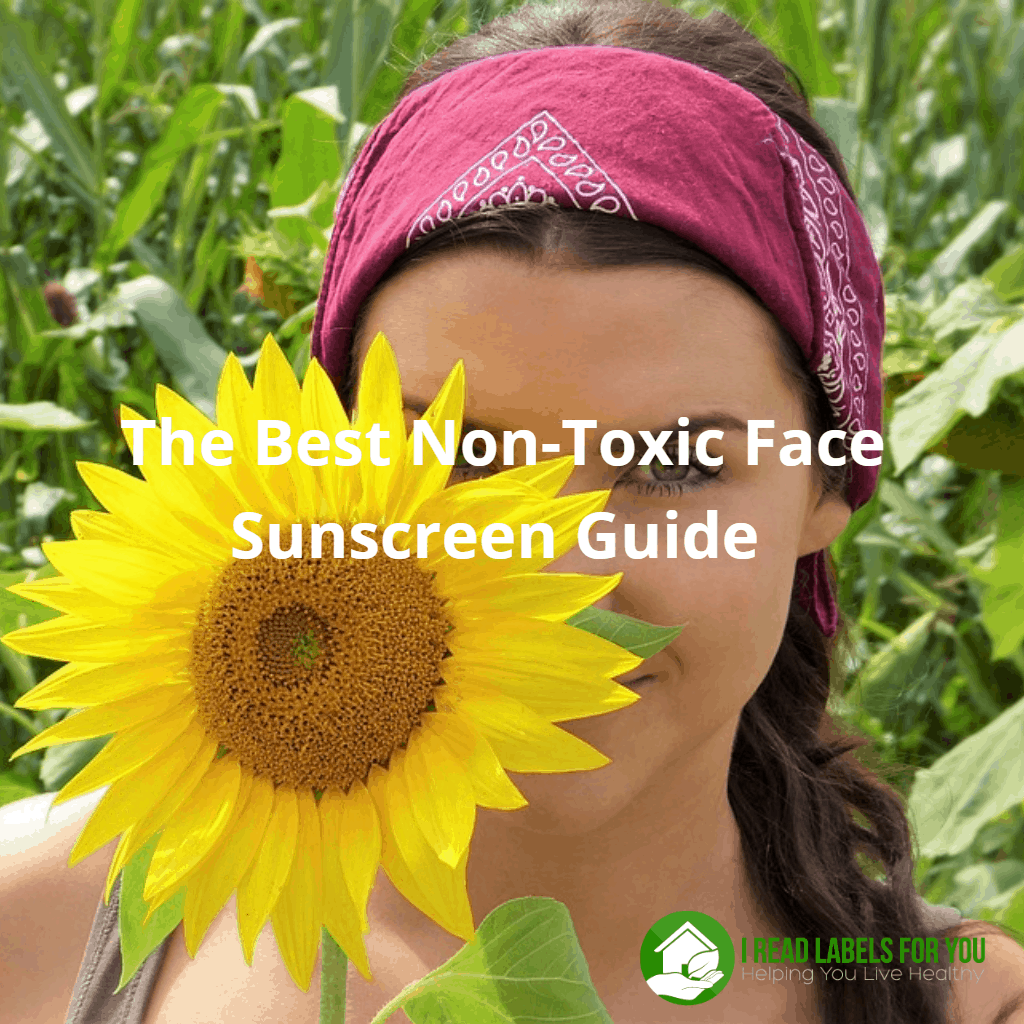
Do you choose your sunscreen by the sun protection factor (SPF)? Though somewhat important, the SPF indicates the length of protection, not the quality. Say your skin burns after 15 minutes of sun exposure. Multiply the SPF value by 15 and you will get the amount of time you are technically protected from sunburn. For example, SPF 30 should protect you for 450 minutes. However, experts recommend re-applying any sunscreen, even waterproof sunscreen, every 2 hours or immediately after swimming or excessive sweating. Then, if SPF is not as important as advertised, what are the right criteria for selection? This non-toxic face sunscreen guide will give you tips on how to choose a safe and effective sunscreen. It will also provide some recommendations for the best mineral facial sunscreen options. To choose the right sunscreen for your child, read my Guide to the Safest Baby Sunscreen and Sunscreen for Kids.
What does an effective non-toxic face sunscreen entail?
According to the National Cancer Institute, 1 in 5 Americans will develop skin cancer by the age of 70. Further, studies have shown that the majority of melanomas (the most dangerous skin cancer) are caused by sun radiation. That is why it is important to wear an effective sunscreen on a daily basis. Besides, it helps to slow down the appearance of wrinkles.
Basically, an effective sunscreen is the one that protects you from both short wave (UVB) and long wave (UVA) ultraviolet light. Thus, recent studies have shown that UVA rays damage skin cells called keratinocytes in the basal (deepest) layer of the epidermis. This is where most skin cancers occur (source). Alternatively, SPF is a relative measure of how long a sunscreen will protect you from UVB rays only. In other words, a higher SPF value does not mean better UVA protection.
The function of UVB and UVA protection is achieved by UV filters, which are the active ingredients in all sunscreens.
Common sunscreen UV filters
To begin with, there are two types of UV filters – chemical and mineral. The former includes the following chemicals:
- Oxybenzone
- Octinoxate
- Homosalate
- Octisalate
- Octocrylene
- Avobenzone
The Environmental Working Group has a really helpful summary table that describes health concerns of these chemicals. I also checked their information with the European Union Chemicals Agency database. If you find a sunscreen with some of these ingredients, I believe your perception that you use a non-toxic face sunscreen will change and here is why. Keep reading to discover the best mineral facial sunscreen options.
Is oxybenzone safe in sunscreens?
Oxybenzone is also called Benzophenone-3 and its chemical name is 2-hydroxy-4-methoxyphenyl. Further, the EWG rates it 8 out of 10 (10 as the most toxic), and the EU Chemicals Agency database marks it for endocrine disruption. When it penetrates the skin, it may disrupt hormones by acting as an estrogen or by blocking testosterone. Because it may alter babies’ birth weight, please do not use sunscreens with oxybenzone during pregnancy.
Additionally, New Zealand dermatologists and the American Society of Contact Dermatitis believe that it may cause an allergic reaction. Furthermore, the State of California added benzophenone as a carcinogen to the California EPA’s Proposition 65 List of Chemicals Known to the State to Cause Cancer or Reproductive Toxicity. Last, Hawaii will ban sunscreens with oxybenzone beginning January 1, 2021 because it is very toxic to coral reefs.
Is octinoxate toxic in sunscreens?
Just as with oxybenzone, Hawaii is banning sunscreens with octinoxate, too, because it is toxic to coral reefs. In addition, the EWG rates it 5, and it penetrates the skin.
Moreover, animal studies have shown that octinoxate has hormone activities affecting reproductive system, thyroid, and behavior. Thus, the EU Chemicals Agency database marked it for hormone disruption. Also, it may cause an allergic reaction, though with lower rates than oxybenzone.
Is homosalate safe in sunscreens?
For starters, the EWG rates it 4, and it also penetrates the skin. Furthermore, scientists have found that it may interfere with the normal function of hormones by disrupting estrogen, androgen, and progesterone. Consequently, the EU Chemicals Agency database indicates that it has been assessed for endocrine disruption.
So, a true non-toxic face sunscreen is not the one that contains oxybenzone, octinoxate, or homosalate. The other chemical UV filters such as octisalate, octocrylene, and avobenzone seem to be relatively okay. However, I have not seen any sunscreen that would have them without the three chemicals we discussed above. So, it is safest to make sure you are using a mineral facial sunscreen instead of a chemical one.
Specifically, the best mineral facial sunscreen will contain zinc oxide or titanium dioxide, and we will talk about them below.
Are nano titanium dioxide and zinc oxide in non-toxic face sunscreen safe?
Both titanium dioxide and zinc oxide are UV filters that protect from UVB and UVA rays (source). In fact, they are not known to penetrate the skin and are not linked to endocrine disruption or other negative health effects.
Further, the word “nano” means one-billionth of a meter (1 meter = 3.28 feet) and denotes something exceedingly small. We used to think that nano zinc oxide penetrates the skin and may cause DNA damage. However, recent FDA and EU studies have not shown that meaningful amounts of nanoparticles completely penetrate the dermis and enter the bloodstream even if you use almost 100% nano sunscreen twice a day. You can read more about that directly on the EU website.
On the other hand, some studies show that very small nanoparticles (smaller than 35nm) of uncoated zinc oxide and uncoated titanium dioxide can be harmful to aquatic life. That is to say, they can cause cellular damage to sensitive organisms such as coral or juvenile fish and invertebrates (source). Hence, it is a good idea to ask about the size of zinc oxide and titanium dioxide particles.
So, in this non-toxic face sunscreen guide, you will find the best mineral facial sunscreen options that I deemed the safest. In addition, the listed names came out of many sunscreens my Instagram followers had asked me about. Also, they are all made with non-nano zinc oxide and their inactive ingredients do not pose health concerns. But first, let us look at the worst and bad sunscreen options.
The worst sunscreens
In my opinion, the following two sunblocks belong in the worst category among those researched for this survey:
- La Roche Posay Anthelios Ultralight Fluid Facial Sunscreen SPF 60
- Sun Bum Original Face SPF 50 Sunscreen Lotion
The reasons you see these two products in the worst category are as follows.
First, both La Roche Posay and Sun Bum contain homosalate among their active UV filters. Plus, La Roche Posay contains oxybenzone.
Second, both have ethoxylated ingredients. Specifically, La Roche Posay has PEG-30 dipolyhydroxystearate, lauryl PEG/PPG-18/18 methicone, and PEG-8 laurate. And Sun Bum has PEG-100 stearate and trideceth-6. Made through the process of ethoxylation, these ingredients may contain 1,4 dioxane, which is a carcinogenic contaminant (source).
In addition, Sun Bum has an allergenic preservative methylisothiazolinone. To clarify, the American Contact Dermatitis Society named methylisothiazolinone Contact Allergen of the Year for 2013.
Therefore, La Roche Posay Anthelios Ultralight Fluid Facial Sunscreen SPF 60 and Sun Bum Original Face SPF 50 Sunscreen Lotion are far from non-toxic sunscreens.
The bad sunscreens
In the table below are the products I consider somewhat better than those in the worst category and the reasons they belong in this category. Despite using zinc oxide (Neutrogena), they cannot make it to the better group in this non-toxic face sunscreen guide. If you are using one of the following products, do not get upset. The list of the best mineral face sunscreen options is rather long, and you will be able to find a replacement for yourself.
In the meantime, the following are the ingredients present in the bad sunscreens:
- Ethoxylated Ingredients
- Homosalate
- Octinoxate
- Parabens
- Iodopropynyl Butylcarbamate
- Phenoxyethanol
- Butylated Hydroxytoluene (BHT)
| Coola Full Spectrum 360° Sun Silk Drops Organic Face Sunscreen SPF 30 | Homosalate |
|
Elta MD UV Daily Tinted Broad-Spectrum SPF 40 | Octinoxate Ethoxylated ingredients (PEG-7 Trimethylolpropane Coconut Ether, Oleth-3 Phosphate) Phenoxyethanol Iodopropynyl Butylcarbamate |
| Black Girl Sunscreen | Homosalate Phenoxyethanol |
| Supergoop Unseen Sunscreen SPF 40 | Homosalate |
|
Cerave AM Facial Moisturizing Lotion with Sunscreen Broad Spectrum SPF 30 | Homosalate Octinoxate Methylparaben Propylparaben |
|
Neutrogena Sheer Zinc Face Dry-Touch Sunscreen Broad Spectrum SPF 50 | Cetyl PEG/PPG-10/1 Dimethicone Phenoxyethanol |
|
Blue Lizard Face Mineral-Based Sunscreen SPF 30+ | Octinoxate Butylated Hydroxytoluene (BHT) Ethoxylated ingredients (Laureth-7, Lauryl PEG/PPG 18/18 Methicone) Phenoxyethanol |
|
Alba Botanica Sensitive Sheer Shield Fragrance Free SPF 45 | Homosalate Ethoxylated ingredient (Polysorbate 60) |
What is wrong with parabens, phenoxyethanol, BHT, and iodopropynyl butylcarbamate?
These ingredients cannot be among those of a non-toxic face sunscreen for the following reasons.
First, parabens, such as methylparaben and propylparaben, are associated with hormone disruption. Thus, there is some evidence that parabens can accumulate in human breast tissue (source).
Second, phenoxyethanol is a preservative that may be irritating to skin, eyes, and lungs. Hence, it is restricted in Japan and is considered harmful for products used on the lips and around the mouth in the European Union. You can read more about phenoxyethanol in my post about its safety.
Third, BHT (butylated hydroxytoluene) is a fragrance or masking ingredient that may cause skin, and eye irritation. Also, there is a lot of controversy surrounding BHT because of its suspected potential endocrine-disrupting and carcinogenic effects (source). Therefore, the EU has been assessing it for endocrine disruption (source).
Lastly, iodopropynyl butylcarbamate is a preservative associated with allergy and immunotoxicity. Thus, dermatologists have seen that it can trigger painful contact allergies in some people at concentrations as low as 0.1% (source). For a complete list of preservatives to avoid, please check out Your Savvy Consumer Superpower.
The better non-toxic face sunscreen options
To start with, all the better sunblocks use zinc oxide and titanium dioxide as UV filters. However, there are some reasons they did not quite make it to the best mineral facial sunscreen category, which you can see in the table below.
| Beautycounter Countersun Daily Sheer Defense for Face SPF 25 | Phenoxyethanol |
|
Thinksport Everyday Face Sunscreen SPF 30 Naturally Tinted | Magnesium Sulfate, Citrus Paradisi |
| Acure Radically Rejuvenating SPF 30 Day Cream | Caprylhydroxamic Acid |
| Suntegrity 5-in-1 Natural Moisturizing Face Sunscreen Tinted, Broad Spectrum SPF 30 | Magnesium Sulfate |
| Babo Botanicals Daily Sheer Facial Sunscreen SPF 40 Fragrance Free | Aluminum Hydroxide |
What is wrong with magnesium sulfate, citrus paradisi, aluminum hydroxide, and caprylhydroxamic acid?
The reasons these ingredients should not be on the list of ingredients of a non-toxic face sunscreen are as follows.
First, magnesium sulfate may be contaminated with heavy metals. I know that because I researched Epsom salts (aka magnesium sulfate) and have seen heavy metal test reports for them. Magnesium sulfate contains heavy metals because it comes from the earth’s crust.
Second, citrus paradisi (aka grapefruit seed extract) may be contaminated with hormone-disrupting chemicals such as triclosan when they use it as a preservative. Given that there is water in ThinkSport sunscreen and there are no other preservatives, I assume it is used as the notorious grapefruit seed extract preservative. I emailed ThinkSport but have not received any answer yet. You can read in detail about the dirty secret of grapefruit seed extract in my post about WaterWipes baby wipes.
Third, aluminum hydroxide is a form of aluminum that can penetrate the skin and accumulate in the body. Hence, this contributes to “body burden” and potentially increases the risk of health problems (source). In addition, some evidence indicates that aluminum in sunscreens may increase the risk of the oxidative damage in the skin (source).
Last, caprylhydroxamic acid is a preservative that does not have much safety data. In fact, Finnish dermatologists determined that it was a new contact allergen in 2016 (source). So, in 2019 the CIR panel began reviewing this ingredient because of sensitization reactions reported in Finland.
The best mineral facial sunscreen options
Needless to say, the non-toxic face sunscreen options in this category do not have harmful ingredients we discussed previously. Above all, they use non-nano zinc oxide and titanium dioxide as their active UV filter.
| Uncoated Zinc Oxide 22.5%, Extra Virgin Olive Oil*, Beeswax*, Cocoa Butter*, Shea Butter & Sunflower Vitamin E*. *Organic | |
| Raw Elements Tinted Face Moisturizer SPF 30 Plastic-free (their other formulations look safe to me, too, and you can find them on the Detox Market website. Please read about heavy metals in makeup.) | Non-Nano Zinc Oxide 23%, Sunflower Oil*, Green Tea*, Black Tea*, Coffee Bean*, Hemp Seed Oil*, Cocoa Butter*, Mango Butter**, Beeswax*, Rosemary Oil Extract**, Vitamin E**, Iron Oxides. * USDA Certified Organic, ** Certified Natural |
| Crunchi Sunlight Facial Sunscreen SPF 30 (my personal favorite non-toxic face sunscreen! I like to use it with Crunchi non-toxic foundation.) (Use the ADVOCATE10 discount code for 10% off on your 1st order of $50+.) | Non-nano Zinc Oxide 12.5%, Bisabolol*, Butyloctyl Salicylate, Butyrospermum Parkii (Shea) Butter*, Cetearyl Alcohol, Cetearyl Olivate, Cetyl Palmitate, Citric Acid, Coco-Caprylate/Caprate, Coconut Alkanes, Ethyl Ferulate, Ethylhexyl Olivate, Glyceryl Caprylate, Glyceryl Undecylenate, Heptyl Undecylenate, Phenethyl Alcohol, Polyhydroxystearic Acid, Propanediol, Sodium Hyaluronate, Sodium Phytate, Sodium Stearoyl Glutamate, Sorbitan Oleate, Sorbitan Olivate, Sorbitan Palmitate, Squalane, Tocopherol, Triethoxycaprylylsilane, Vitis Vinifera (Grape) Seed Oil*, Water, Xanthan Gum. *Certified Organic Ingredients |
| Titanium Dioxide (6.00%), Zinc Oxide (6.00%), Aloe Vera Gel Juice, Water, Green Tea Leaf Extract, Caprylic/Capric Triglyceride, Cetearyl Alcohol, Cetearyl Glucoside, Cetearyl Olivate, Pumpkin Seed Oil, Ethylhexyl Palmitate, Glycerin, Glyceryl Stearate, Sunflower Oil, Leuconostoc/Radish Root Ferment Filtrate, Almond Oil, Sesame Seed Oil, Sodium Laurylglucosides Hydroxypropylsulfate, Sorbitan Olivate, Cocoa Butter, Xanthan Gum. | |
| Earth Mama Lady Face Stick SPF 40 (please read about heavy metals in makeup to make informed decisions) | Zinc Oxide 22%, Coconut Oil*, Sunflower Seed Oil*, Beeswax*, Candelilla Wax, Titanium Dioxide, Iron Oxides, Carnauba Wax*, Shea) Butter*, Tocopherol, Cocoa Seed Butter*, Aloe Vera Leaf Juice*, Calendula Flower Extract* *Organic |
In addition to the products in the table that were requested by my readers, I like several non-toxic sunscreens that I consider safe and effective.
Additional recommendations of non-toxic face sunscreen options that I have tried
In my opinion, the following products are also the best mineral facial sunscreen options:
- Kari Gran Three Sixty Five SPF 28
- Juice Beauty SPF 30 Mineral Moisturizer Sheer
- Annmarie Sun Love – Natural Sunscreen Broad Spectrum SPF 20
- Blissoma Photonic – Light Shifting Solution SPF 25 Broad Spectrum Face Sunscreen
Let us talk about each of them briefly.
Kari Gran non-toxic face sunscreen
To begin with, the product has 17% non-nano zinc oxide and organic nourishing and healing plant oils. In addition, it has no water, so there is no need for preservatives. Further, the whitening effect is minimum. And, of course, I love the fact that it comes in glass, which is good for the environment.
Due to the absence of water and emulsifiers, the consistency of this mineral face sunscreen is close to facial oils. When my skin was on the dry side, it was good for me, and I did not have to use a moisturizer first. If your skin is oily, you might find it greasy, though. Therefore, I believe that it will work great for dry or sensitive skin.
Finally, this sunscreen is available on Credo Beauty and Amazon.
Juice Beauty sunscreen
To begin with, this light and non-greasy face sunscreen uses 20% non-nano zinc oxide and organic botanicals. Because it contains water, the product needs preservatives, which are phenethyl alcohol and ethylhexylglycerin. Phenethyl alcohol occurs naturally in the environment, produced by microorganisms, plants, and animals. As for ethylhexylglycerin, based on my knowledge of other choices for preservatives, I added it to my approved list of preservatives.
Juice Beauty sunscreen has the texture of a typical lotion and goes on very white at first but then dissipates quickly. In fact, I have not had any problems with this non-toxic face sunscreen, and I like the way it feels on my skin. It has a bit of an odd scent, though.
It is available here, on Credo Beauty, and Amazon.
Annmarie Sun Love best mineral facial sunscreen
The active ingredient is 15% non-nano zinc oxide, and there are several organic botanicals.
To deal with the whitening effect, they added mineral pigments such as mica, iron oxide, yellow iron oxide, and brown iron oxide to create a tint. Though there are concerns about possible heavy metal contamination in mineral pigments, Annmarie assures me that they source mineral pigments from a trusted US supplier. Also, they showed me their supplier documentation reflecting that heavy metals are within FDA guidelines. You can learn more about that in my blog post about heavy metals in makeup.
The product is available on Annmarie website.
Blissoma Photonic broad-spectrum non-toxic face sunscreen
Blissoma has practically no whitening effect because of a low percentage of non-nanoparticled zinc oxide (only 12.5%). Besides, zinc oxide is micronized. It means that it is smaller than your typical non-nano zinc oxide, yet bigger than nanoparticled zinc oxide. Furthermore, a relatively high SPF of 25 is achieved due to the herbs and oils in it that have natural SPF properties.
This non-toxic face sunscreen uses many beneficial botanical ingredients. Specifically, even the preservatives are botanical, namely aspen bark extract and leuconostoc/radish root ferment filtrate. In addition, there is niacinamide (vitamin B3), which helps protect from UV light damage, improves skin elasticity, and reduces blemishes and inflammation (source). When I happen to have breakouts, I use Blissoma Smooth A+ – Correcting Serum that contains 4% niacinamide. This is probably the main reason it takes care of my breakouts promptly.
As for the texture, this best mineral facial sunscreen is non-greasy and light and is likely to work well for oily or normal skin. When I used it on the beach once, I did not get any burn or even tan.
And, of course, I appreciate the glass packaging – less environmental pollution. This is my favorite!
You can buy this product on Blissoma website.
Conclusion about non-toxic face sunscreen
To sum up, an effective non-toxic sunscreen must provide both UVA and UVB protection and use mineral UV filters, such as zinc oxide and titanium dioxide. It should be a broad-spectrum sunblock without harmful ingredients, such as oxybenzone or ethoxylated ingredients.
Hence, in my opinion, the products I categorized as “best” sunscreens provide effective UVA and UVB protection. However, I encourage you to check your sunscreen in the EWG sunscreen database for the potency of protection from UVA rays.
To choose the right sunscreen for your child, read my Guide to the Safest Baby Sunscreen and Sunscreen for Kids. Additionally, for multiple options of non-toxic products, please visit my shop. Also, do not hesitate to book a consultation if you need help with non-toxic living. Finally, consider applying to the Savvy Consumer Circle to be a part of a community of like-minded people seeking healthy decisions for their everyday life.

Download The Free Guide!
5 Powerful Steps To A Non-Toxic Home
Join our informed consumer community and get our free guide the “5 Powerful Steps To A Non-Toxic Home”.

 Written by
Written by 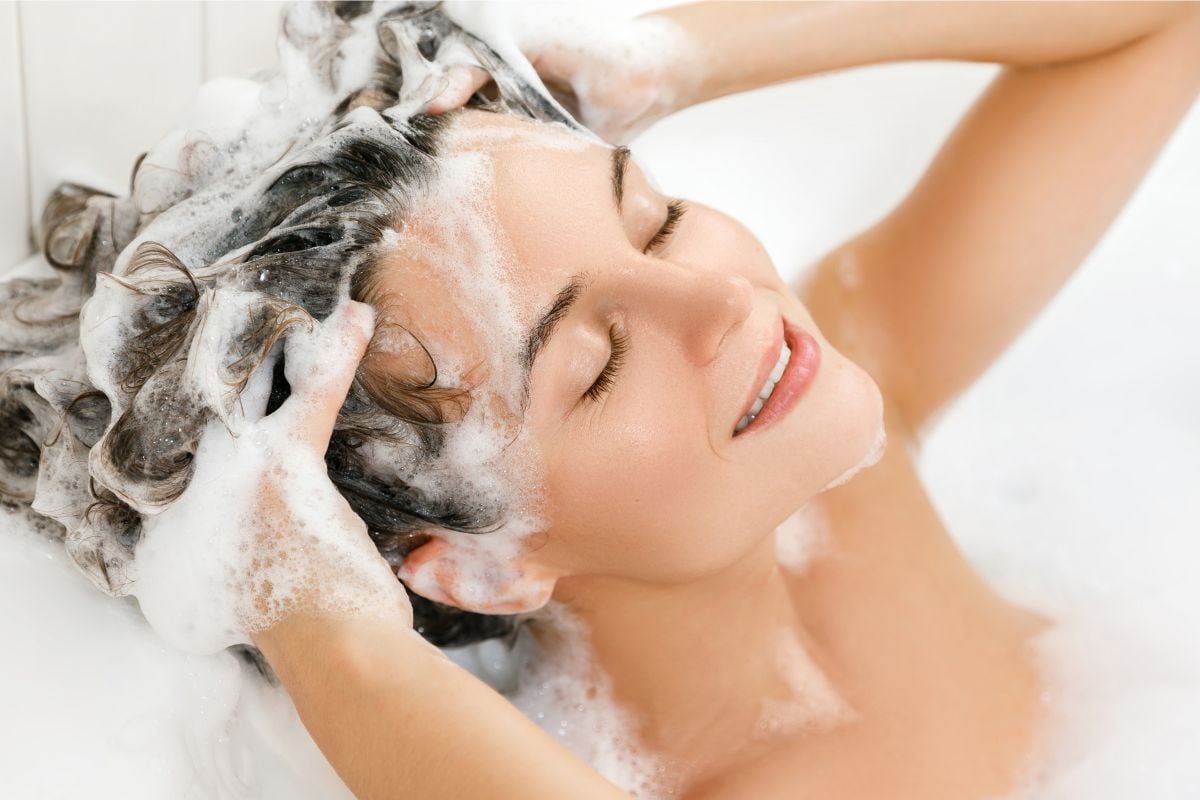
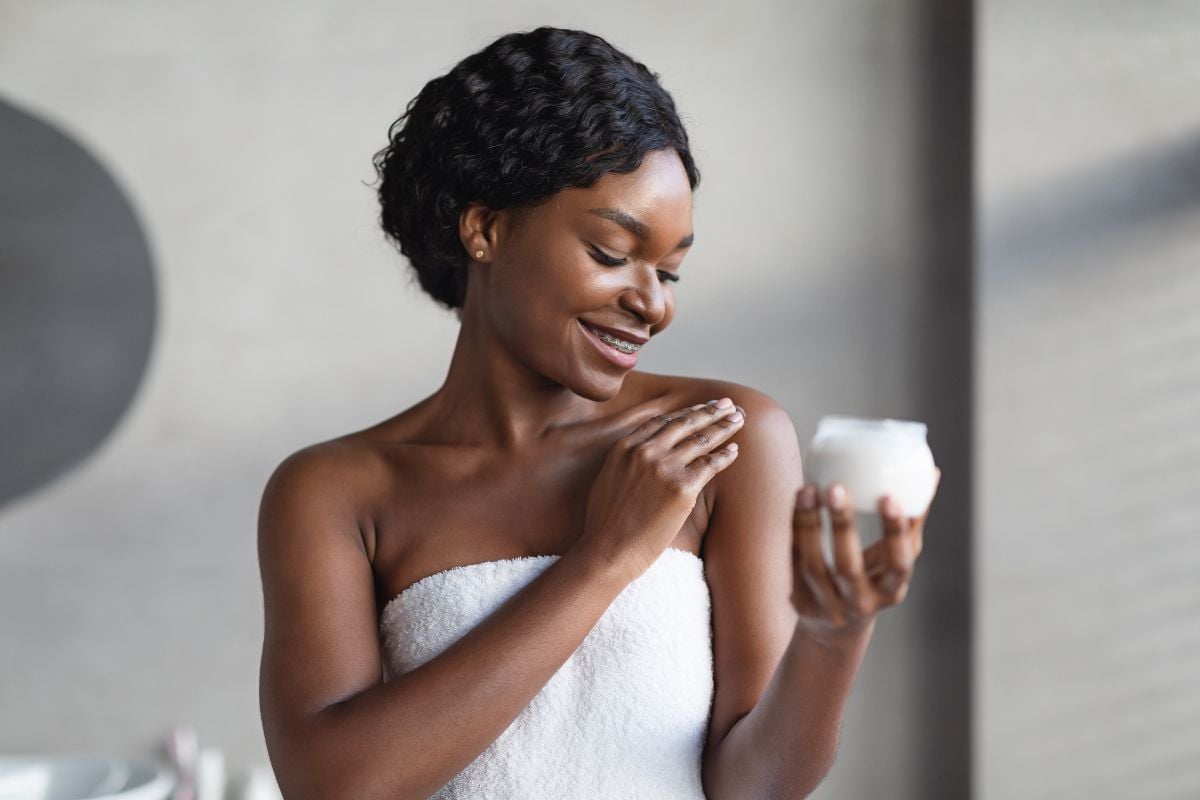
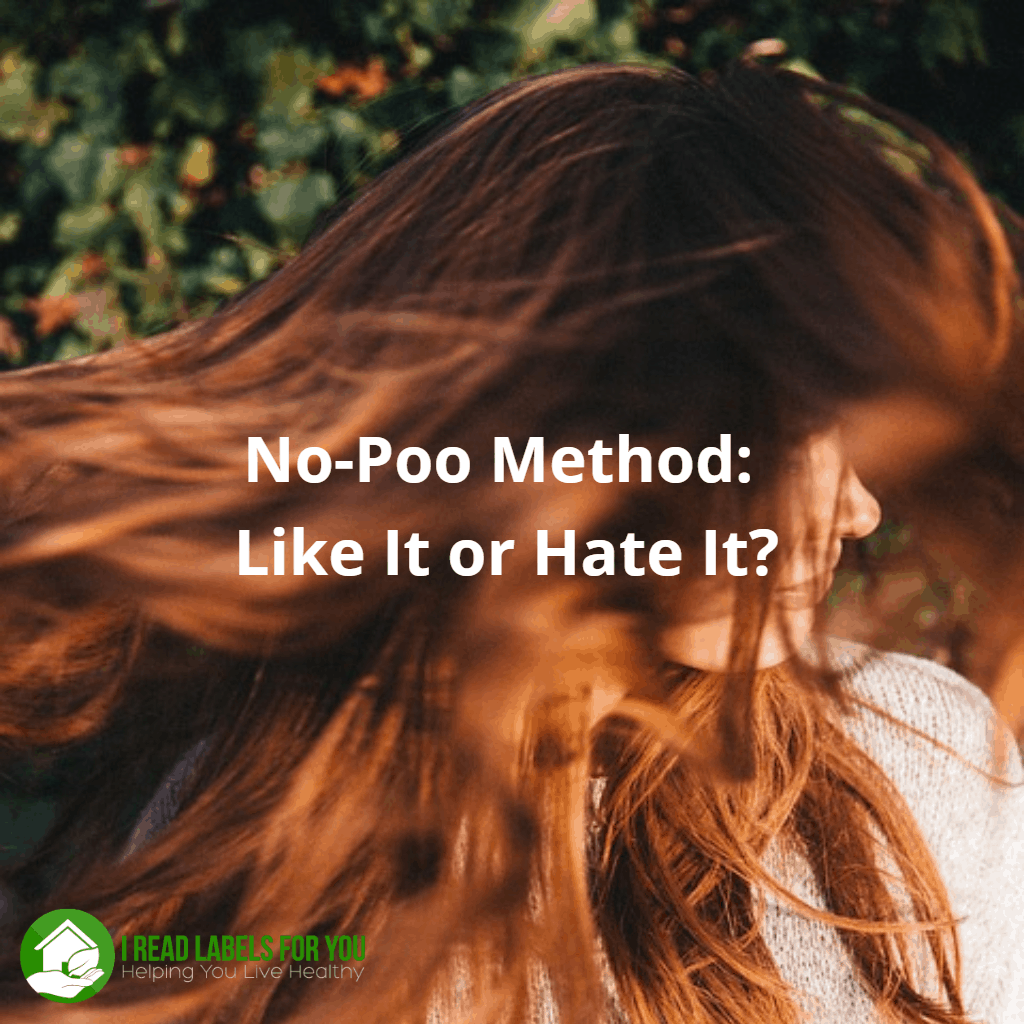
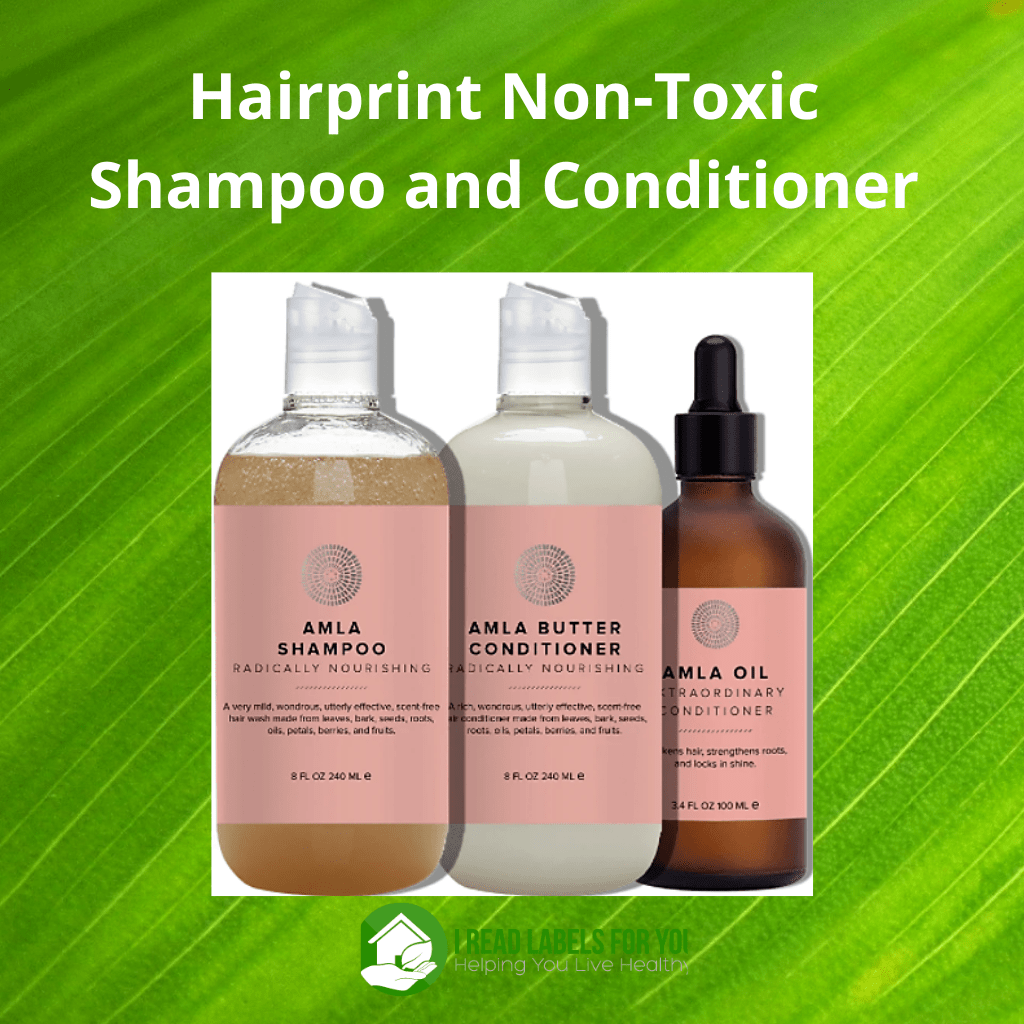
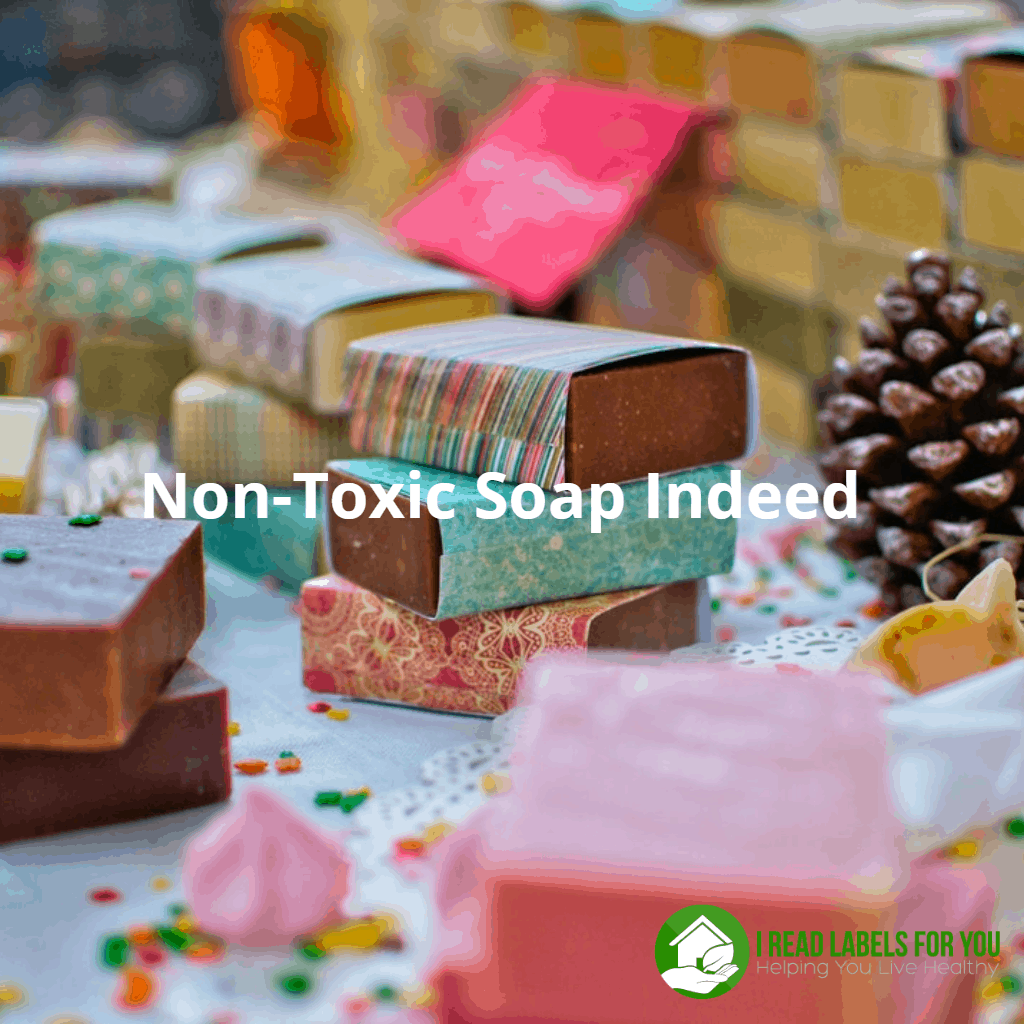

Hello Irina, You’ve provided very helpful information, thanks very much. I’m always on the lookout for non toxic sunscreen and it has become an increasingly difficult task.
In May 2021, Valisure released a citizen’s petition on Benezene in Sunscreen. Although their list is comprehensive, they haven’t tested each and every sunscreen and spf lotion on the market. In addition, even though some of their tested sunscreen batches were deemed benzene free…many of those products still include toxic chemicals.
So perhaps it would be best to cross reference non toxic sunscreens against Valisure’s list of benzene free products ?
Thank you, Colleen! We’ll take it into consideration!
Hi Irina-
Thanks for this post!
What about Mad Hippie advanced skin care facial SPF 30+ UVA/UVB BROAD-SPECTRUM?
Thank you!!!
Charlotte
Hello Charlotte! We appreciate your interest! Irina will be happy to help you with your question in a private consultation: https://ireadlabelsforyou.com/services/
Hi! Where can I order these sunscreens?
Hi, Jane: Have you tried to click on the links? Here is my favorite: https://ireadlabelsforyou.com/product/crunchi-facial-sunscreen/. Please click on the purple button on that page. ~Irina
Irina, I am allergic to PEG and to D-tocopherol. Can you recommend any sunscreen for me? I can’t find a any!
Hmm… Tocopherol is very common. ~Irina
Hi Irina,
Thank you for this guide! Thank you for the whole website. I’ve just started using it tons.
I just bought the Pure Haven sunscreen, but it was too thick and white. I wanted to get the Crunchi sunscreen, but it’s out of stock. Would you say the Crunchi sunscreen has a better consistency? If so, I’ll try it as soon as they get it back in. In the meantime, which would you say is the next best that has a good consistency? I use EltaMD and love how it goes on, but now I realize it’s toxic. Gahhhhh.
Warmly,
Carina
Crunchi sunscreen is thick, but not greasy but it does leave a whitening effect, too. I think you will like Blissoma sunscreen. Have you considered it? ~Irina
Hi there!
I am super excited to see your updated guide! I finally found my holy grail *tinted* face sunscreen—which is Suntegrity Impeccable Skin. It’s the only product from their line that is silicone free and works with my more oily skin. However, I am searching all over for the best non toxic sheer face sunscreen for when I’m home or getting really sweaty while working out. The problem I have with many you have listed and other sites, is when dealing with blemish prone skin, we cannot, (at least for most of my reactive skin green beauty peeps) use coconut oil. And it’s in almost everyday suggested non toxic sunscreen. Do you have any suggestions for a sheer, coconut oil free, facial sunscreen?!
Thank you so much!
Brittney
Hi, Brittney! We apologize for the delay! You may have already found a product that works for you. Just in case, though, check out this one: https://ireadlabelsforyou.com/product/crunchi-facial-sunscreen/ and the Sunscreen section in our shop: https://ireadlabelsforyou.com/product-category/sunscreen/ We hope this helps!
Hi Irina, I wonder if you’ve ever looked at The Organic Pharmacy sunscreen, ingredients below. I’d love to know your thoughts:
Cellular Protection SunCream SPF 30
100 ml59% Organic
Hydrating broad-spectrum mineral sun protection suitable for both the face and body, with extracts of Rose Hip and Calendula. Suitable for Vegans.
QUANTITY:
*Aloe Barbardensis Leaf Juice Powder, Aqua (Water), Zinc Oxide , **Alcohol, Caprylic/Capric Triglyceride, Glycerin, Behenyl Alcohol, Cetearyl Alcohol, Glyceryl Stearate, *Butyrospermum Parkii Butter, *Helianthus Annuus Seed Oil, Polyhydroxystearic Acid, *Simmondsia Chinensis Seed Oil, *Rosa Canina Fruit Oil, Ascorbic Acid, *Calendula Officinalis Flower Extract, Citrus Grandis, Glycine Soja (Soybean) Sterols, Isostearic Acid, Lactic Acid, Lecithin, Parfum (Fragrance), Silica, Titanium Dioxide, Tocopherol, Xanthan Gum, Hexyl Cinnamaldehyde, Geraniol, D-Limonene, Linalool
*Ingredients from organic farming ** Made using organic ingredients
Hi, Shar: Yes, I have. In fact, I researched the whole brand. I do not recommend their sunscreen because it has fragrance and they do not disclose the ingredients of it. Per the International Fragrance Association, there are 3,999 chemicals used in fragrance mixes. And among them, there are allergens, endocrine disruptors, and carcinogens. Also, they use Citrus Grandis as a preservative, which I talked about in the post here: https://ireadlabelsforyou.com/waterwipes-baby-wipes-natural-or-toxic/ And last, they do not disclose sunscreen ingredients as the FDA requires. ~Irina
My major issue with sunscreen is that I’m allergic to Tocopherol and most have it in them! Also it can’t be oil based because my foundation is water and aloe based.
..
Good to know, Jess. I’m in the process of updating this guide. Which brands are you considering? ~Irina
Hi Irina! Thank you so much for putting such hard work into this research! I wish I’d found your website sooner, as I just ordered a new sunscreen: First Aid Beauty’s WEIGHTLESS LIQUID MINERAL SUNSCREEN WITH ZINC OXIDE SPF 30.
Would you mind perusing the ingredients and letting me know your thoughts?
Here are the ingredients: ACTIVE INGREDIENTS: Zinc Oxide 16.8%.
INACTIVE INGREDIENTS:
Caprylic/Capric Triglyceride, Water/Aqua/Eau, Isododecane, Polymethyl Methacrylate, Tetradecane, Cetyl Diglyceryl Tris(Trimethylsiloxy)Silylethyl Dimethicone, Hydrogenated Poly-Decene, Dimethicone, Polypropylene, Silica, Sodium Chloride, Alteromonas Ferment Filtrate, Camellia Sinensis Leaf Extract, Tetrahexyldecyl Ascorbate, Sorbitan Oleate, Glycyrrhiza Glabra (Licorice) Root Extract, Chrysanthemum Parthenium (Feverfew) Extract, Tridecane, Tocopheryl Acetate, Tocopherol, Acrylates Copolymer, Quaternium-90 Bentonite, Dimethicone Crosspol-Ymer, Octyldodecanol, Caprylyl Glycol, Polyhydroxystearic Acid, Polyglyceryl-3 Polyricinoleate, Lecithin, Isostearic Acid, Propylene Carbonate, Hexadecene, Butylene Glycol, Hexylene Glycol, Glycerin, Phenoxyethanol, Potassium Sorbate, Magnesium Oxide, Alumina, Ci 77891 (Titanium Dioxide), Ci 77491/77492/77499 (Iron Oxides).
Thank you for all you do!
Hi, K: It looks you are doing a good research and applaud you for wanting to create a healthy home. I run the Savvy Consumer Circle for people like you who want to go deeper with non-toxic healthy living: https://ireadlabelsforyou.teachable.com/p/savvy-consumer-circle Let me know if you have any questions about it. ~Irina
Hi Irina,
Would you pls suggest a good baby formula. I always follow your suggestions.
This will help me a lot and my baby.
Thank you
Thank you for all your in-depth research Irina. Because of your great review, I used Blissoma’s Photonic for 3-1/2 months while wintering for the first time in Florida this winter. I love it. It’s not whitening. It feels very nice on my skin. And I never got a sunburn (except the time when I didn’t use it.) Altho it’s pricey, I also used it on my arms and legs when they were going to be exposed extra long. Prior to finding out about Blissoma, I was mostly living by “no-sunscreen is safer than toxic-sunscreen.” I’m not a “sun-bather” but I really enjoy being outdoors. Last summer I tried Annmarie’s but I thought it was greasy feeling, which made my hair stick to my face, it was whitening on my skin so I only used it working around my yard. One other thing about it was that it had a sweet scent to it that always made me think that the neighbor’s baking was wafting over into my yard–finally one day I realized it was the sunscreen I had on and there went that image of my neighbor baking away and never sharing with us! …I feel good about using Blissoma on my skin daily…Now we just need some sun-shiney days!
Thank you for your feedback, Cori! It’s nice to hear from you. I’m so glad you like Blissoma sunscreen. ~Irina
I tried the Annemarie Gianni sunscreen but it was too greasy for me. I use Josh Rosebrook Nutrient Day Cream SPF 30 and LOVE it!
Hi Irina,
Are there updates on your sunscreen reviews? 🙂 I’m in the market for a sunscreen this year. Last year I used All Terrain Aqua Sport liquid but I thin it’s been discontinued. What do you think of Beauty Counter’s sunscreen stick? Ingredients: Active ingredient: Zinc Oxide 15.4% Ingredients: Coco-Caprylate, Helianthus Annuus (Sunflower) Seed Oil, Theobroma Cacao (Cocoa) Seed Butter*, Caprylic/Capric Triglyceride, Cetearyl Nonanoate, Mica, Coconut Alkanes, Polyhydroxystearic Acid, Beeswax, Butyrospermum Parkii (Shea) Butter*, Cocos Nucifera (Coconut) Oil*, Euphorbia Cerifera (Candelilla) Wax, Lauryl Laurate, Citrus Aurantium Dulcis (Orange) Peel Oil, Coco-Caprylate/Caprate, Isostearic Acid, Lecithin, Polyglyceryl-3 Polyricinoleate, Carthamus Tinctorius (Safflower) Seed Oil, Citrus Limon (Lemon) Peel Oil, Citrus Reticulata (Tangerine) Fruit Extract, Citrus Reticulata (Tangerine) Peel Oil, Cucurbita Pepo (Pumpkin) Seed Oil*, Punica Granatum Seed Oil*, Euterpe Oleracea Fruit Oil*, Glycerin, Tocopherol, Glycine Soja (Soybean) Oil, Silica, Eschscholzia Californica Leaf Cell Extract, Rosmarinus Officinalis (Rosemary) Leaf Extract, Mentha Piperita (Peppermint) Oil, Mimosa Tenuiflora Bark Extract, Aloe Barbadensis Leaf Extract. *Organic
There is also an All Terrain sunscreen cream that is unscented that I may try. Active Ingredienst: Zinc Oxide 16.0% Inactive ingredients: Water, Caprylic/Capric Triglycerides, Squalane, Glyceryl Stearate, Cetearyl Alcohol, Methyl Cellulose, Caprylyl Glycol, Helianthus Annus (Sunflower) Seed Oil, Aloe Barbadensis (Aloe) Extract, Organic Simmondsia Chinensis (Jojoba) Seed Oil, Tocopherol (Vitamin E), Xanthan Gum, Extracts of Fucus Vesiculosus (Bladderwrack), Cucumis Sativus (Cucumber) Fruit, Citrus Grandis (Grapefruit) Seed, Laminaria Digitata (Sea Kelp), Magnesium Ascorbyl Phosphate, Citric Acid.
Thank you for letting me know, Fonda! ~Irina
Would love to know your opinion on the Hynt sun prep
Ps I bought Crunchi based on your recommendation! Thank you for enlightening us on the brand and product!
Hi Irina! What did you decide about Suntegrity – I just bought that one based on Mommy Board suggestion.
Hi, Natalie: How do you like it? ~Irina
As a darker skin tone, pigmented physical sunscreens are a must – no amount of time or rubbing removes the white tint. I’d love if you included your reviews of those in future years (I understand the reason you did not this year) because it would be so helpful. And hopefully your reviews of tinted sunscreens and the attention it gets will spur action for companies to go EcoCert made in the US or Europe! For me, I am using Sunintegrity 5 in 1 tinted because it’s the safest non-whitening sunblock I’ve been able to find that doesn’t turn me pinkish white. I’d love to hear from you or others on their view or other suggestions specifically for darker toned people.
Thank you so much, Daisy, for your questions and suggestions. ~Irina
Hi Irina,
I’m wondering if you have looked at Devita Face Sunscreen spf 30. It goes on so nice and not white at all. It’s almost too good to be true. Ive been using it for a while since it’s rubs on so easily.
Hi, Amy: I could not find any preservatives listed. And when I contacted them, they were not very helpful. ~Irina
Thank you Irina, Sunscreen is on my list of things to buy. Since I had the reaction the PPD in the organic hair dye my skin is very sensitive to the sun as well as many chemicals out there on the market. Being of Italian heritage this is new to me as I was able to tolerate the sun better than others. Last year I broke out in hives from the sun! I need to be very careful on what I use on my skin because I am now have cross sensitivity to many other chemicals that I never even thought twice about. Especially PABA. Your findings are much appreciated!!
Hi Irina
I often use Badger Sunscreen but I notice this year EWG has a tiny bar under the cancer category. Should I be concerned about that?
Thanks
I believe it is the best rating you can get. I have not seen any sunscreens with no concerns. We should always look at the alternatives to know if we are making the best decision. And in this case, the alternatives are way worse. 🙂 Does it help? ~Irina
Hello Irina,
Thank you for your response!
These are the sunscreens that some of the other ladies in the previous comments were in question about. Maybe one of these sunscreens listed below meet your criteria and standards. I appreciate your time in researching these products to help so many people. I’m looking forward to your next edition of the Safer Face Sunscreen Guide! Take Care! Thank you.
1) Suntegrity – “5 in 1” Natural Moisturizing Face Sunscreen – Tinted, Light (comes in different shades)
2) EltaMD Facial Sunscreens
3) Devita – Daily Solar Protective Moisturizer SPF 30
4) Hynt Beauty – Sun Prep Broad Spectrum SPF 25
Thank you so much, Jessica. I am working on it. I purchased 2 new moisturizers with SPF and can’t wait to share my findings. ~Irina
Thank you Irina 🙏🏼 for your research and updating your Sunscreen Guide!! You are such a sweet lady for working on this so quickly. Right in time for this hot weather!
Thank you, Jessica! It is so nice to hear the words of gratitude. Thank you, thank you. ~Irina
Hello Irina 🙂 Summer is soon approaching and I’m going to be on the lookout for a healthier sunscreen for my face. Any updates on this post? Thank you very much for your time!
Thank you for reminding, Jessica. I will do my best to get to it as soon as I can. Is there a specific face sunscreen you are looking into? ~Irina
Thank you so much for Irina, I will be awaiting the updated posts… 🙂
The Hana Organic Skincare Everyday Crème is heavenly!! I’m thrilled to have ordered it and will sure be trying their other products! Thank you for sharing it with us! 🙂
Thank you, Julia, for taking time to provide your positive feedback. That is so helpful. What do you like about it the most? ~Irina
I have been using and loving the Badger Sunscreens so far, but it does leave my skin oily and I am afraid it is making me break out, so I was wondering what your opinion is on Suntegrity Skincare 5 in 1 Tinted Moisturizing face sunscreen? You get it in 4 different shades… Here are the ingredients:
Inactive Ingredients: Aloe Barbadensis (Organic Aloe Vera) Leaf Juice, Capric Caprylic Triglycerides (Coconut Oil Extract), Water (Aqua), Sorbitan Stearate (Plant Derived), Glyceryl Stearate (Plant Derived), Polyglyceryl-4 Isostearate (Plant Derived), Hexyl Laurate (Plant Derived), Simmondsia Chinensis (Organic Jojoba) Seed Oil, Cetyl Dimethicone (Mineral Derived), Magnesium Sulfate (Epsom Salt), Helianthus Annuus (Organic Sunflower) Seed Oil, Cucumis Sativus (Organic Cucumber) Fruit Extract, Astaxanthin (Algae Source), Hyaluronic Acid (Plant Derived), Chlorella Emersonii (Red Algae) Extract, Camellia Sinensis (Organic Green Tea) Extract, Punica Granatum (Organic Pomegranate) Seed Oil, Polyaminopropyl Biguanide*, Ethylhexylglycerin*, Iron Oxide
* Paraben-Free Preservative
I know you are not a fan of Ethylhexylglycerin, but it is marked as a safer preservative choice on your preservative cheat sheet.
Please let me know what you think Irina, I would really appreciate it.
Martie:
I will consider including this product when I update this post. This is so good that you are asking. I will be updating the preservative cheat sheet, too. Sorry, I wish I could just do it at once. 🙂 ~Irina
Irina, thanks so much for this article. I learned a lot, and am happy to find out that my current sunscreen meets the standards! I use Solar Protective Moisturizer SPF 30+ by De Vita, made with zinc oxide. It goes on very thin and nearly invisible. Highly recommended!
So based on the information about toxicity to pets, for me personally, I would be comfortable wearing a zinc oxide-based sunscreen as long as I kept my bare parts away from my dog, who is about 70 lbs. If she gets in a lick or two, it probably won’t be harmful to her. Hopefully the smell won’t be appealing enough to her to encourage her to lick, and I will need to shower it off when I no longer need to be wearing it.
Thank you for sharing this, Beverly! Do they talk about other chemicals or just zinc? ~Irina
Hi Irina,
I found some good info at https://vcahospitals.com/know-your-pet/zinc-poisoning-toxicity-in-pets. Surprisingly, quite a few items commonly present in households contain zinc, such as:
“Skin creams (diaper rash cream, protective ointments, sunscreens, etc.), shampoos, deodorants, vitamins, and over-the-counter cold remedies and lozenges
U.S. pennies (pennies minted after 1982 are 97.5% zinc)
Metal nuts, bolts, board game pieces, zippers, toys, jewelry, staples, galvanized metal items, and other common metal items (some of these may contain large amounts of zinc)”
The takeaway basically for how much zinc is toxic or poisonous to pets:
“It all depends on the pet’s size, the form of zinc ingested, and how much was ingested. Certain forms of zinc are more readily absorbed by the body than others. For instance, ingestion of a zinc oxide cream may only cause stomach upset, whereas ingestion of even one penny can cause life-threatening toxicity.
If your pet ingests a topical cream containing zinc, you may not need to worry unless it was ingested multiple times or in large amounts. However, certain types of topical medications (e.g., skin cancer or psoriasis treatments) can be very dangerous – or even deadly – to pets. Call your veterinarian or Pet Poison Helpline if you’re ever unsure.”
Yes, I didn’t understand why the vet thought other chemicals were OK to ingest. I didn’t know if you had heard of any of this before and maybe knew otherwise on the zinc oxide. I was totally unaware of pet sunscreens and was surprised she said human sunscreens were OK to use, given they usually tell you not to use human shampoos to bathe your dog with! I will have to research the zinc oxide toxicity claim for dogs and see what there is to it. I currently don’t use sunscreen on a regular basis; I stopped using them a few years ago when I heard that the chemicals actually increase the risk of sun cancer, and that sunscreens can interfere with the sunlight creating vitamin D for our bodies. I’m not sure about the validity of either of those claims , but decided to go without. I’m not someone who hangs out at the pool or beach, but I do like to work in the yard and have been known to set up a large patio umbrella over an area I’m weeding if it’s in the sun too much 🙂
Let us know what you find out, Beverly. Thanks! ~Irina
Hi Irina,
I’ve actually been going without sunscreens because of the chemicals in them, so I was happy to see your research. I got the $5 sampler from AnnMarie’s for the SunLove. I was surprised at how greasy it felt, plus the tint was too light and still looked “ghostly.” Then I read in Southern Living’s Ask Dr. Molly (veterinarian) column that “Pet-specific brands of sunscreen are available, but many products made for humans are okay for pets–except ones containing zinc oxide, which is toxic if ingested.” My dog loves to lick any bare skin she can find, so now it seems I won’t be able to use zinc oxide-based sunscreens. Just wanted to make this known to others who have pets that lick their skin.
Hi, Beverly: It is nice to hear from you again! How have you been? And I am sorry that you did not like Annmarie sunscreen. I don’t understand why Dr. Molly thinks that titanium oxide or even endocrine-disrupting chemicals are okay for dogs to ingest but not zinc oxide. Did she provide any reason or sources to support her statement? What brand are you using now? Thank you, again! And if you are reading this comment and any products I have listed in this post work for you, please let us know, too. I highly appreciate that! ~Irina
Thank you, Irina. You have guided me well on my quest to live a less chemical life. After switching to mineral sunscreen, I have tried Badger’s tinted sunscreen that you recommend, Think Sport Everyday Face tinted sunscreen, and Elta MD SPF 41 tinted sunscreen. Badger, though I trust and regularly use their other products, I found to be fairly thick and difficult to blend in, but I like the feel and tint of the Think Sport and Elta MD. Based on ewg ratings, I prefer Thinksport and use it daily. Would you have any further insight either of these? Also, I have friends who are fans of the Arbonne sunscreen, but I’ve not been so sure. Any thoughts?
Thank you, PJ, for sharing this helpful information. I will definitely take a look at these brands in more detail when I am updating this post next time. You are right about Arbonne. Thank you. ~Irina
Hi Irina! Can you let me know your thoughts regarding the sun prep SPF 30 from hynt beauty ? Here are the ingredients:
Active Ingredient: Titanium Dioxide 9%
Ingredients: Aloe Vera Gel (Purified Water & Aloe Vera Barbadensis), Sesamum Indicum (Sesame) Seed Oil*, Krameria Triandra (Rhatany) Root Extract* , Hyaluronic Acid (plant derived), Camellia Sinensis (Green Tea) Extract*, Caprylic/Capric Triglycerides, Oryza Sativa (Rice Bran) Oil*, Laminaria Algae Extract*, Comfrey Root*, Dexapanthenol, Vitis Vinifera (Grape Seed) Extract*, Glycrrhiza Glabra (Licorice Root) Extract*, Sodium PCA, Squalane (Plant Derived), Allantoin (Plant Derived), Leucidal Liquid (Radish Root Natural Preservative), Tocopherol Linoleate/Oleate (Vitamin E), Wild Pansy Extract*, Pycnogenol (Pine Bark Extract), Riboflavin Root Extracts, Alpha Bisabolol (Chamomile)*, Plantain, Beta glucan
Thank for this, Elena! If it meets my standards, you will see it in the next edition of the Safer Face Sunscreen Guide. Thanks! ~Irina
It is very important to remember that the SPF listed is based upon using one ounce of sunscreen. Yes, one ounce it what we are supposed to be applying and I’m always shocked by how few people know this.
Hi, Hannah: thank you for bringing this up. It is one ounce per exposed areas of the body, which might not very clear. I think a better way to say it is 2mg/cm2, which would be roughly 0.25 teaspoon per 0.155 squared inch. Yes, it is a lot of sunscreens. ~Irina
Why did this not come out 2 days earlier?? 🙂 I just placed an order to try Juice Beauty CC Cream. It’s SPF 30, non-nano Zinc Oxide 20%. I was going to get the tinted moisturizer (BB cream), but decided to add the anti-aging. 🙂
Will definitely try Hana (Badger is just so hard to blend) depending how Juice Beauty performs or if the ingredients aren’t the best. EWG has it as an overall 1, with all ingredients a 1 or 2 and only 2 with no data (polyglyceryl-10 laurate and petitgrain oil).
Thanks again for all you do!
Active Ingredient:
Zinc Oxide 20%
Inactive Ingredients:
Aloe barbadensis (organic aloe juice)*,
cocos nucifera (organic coconut oil)*,
pyrus malus (organic apple juice)*,
vitis vinifera (organic white grape juice)*,
caprylic/capric triglyceride†,
sorbitan stearate,
ricinus communis (castor seed oil),
polyglyceryl-10 laurate,
magnesium sulfate,
helianthus annuus (organic sunflower seed oil)*,
simmondsia chinensis (organic jojoba seed oil)*,
tocopherol (Vitamin E),
magnesium ascorbyl phosphate (Vitamin C),
sodium hyaluronate†,
malus domestica (apple fruit cell culture extract),
vitis vinifera (grape fruit cell extract),
citrus medica limonum (lemon leaf cell extract),
iron oxides,
phenethyl alcohol,
ethylhexylglycerin†,
citrus reticulata (mandarin oil),
citrus aurantium (petitgrain oil).
† = plant derived
* = Certified organic ingredient
Stephanie, I actually forgot about Juice Beauty sunscreen. I used it for a few years, the non-tinted version and I kind of liked it. It also goes a bit white (just like any physical sunscreen would) but it did not irritate my reactive skin or make me break out. The ingredients are also pretty “clean”. The way I used to apply the non-tinted version was by mixing it w a bit of Dr. Hauschka bronzer (just a few drops). Then I would wait about 10 min and blot the residue and forget about it 🙂 I hope you like it. If I was to rate it, I would say that was my second favorite after my current choice Suntegrity.
Hi, Stephanie: I think polyglyceryl-10 laurate and petitgrain oi are okay. I am not a huge fan of ethylhexylglycerin as it is linked with skin irritation in the Skin Deep. To be fair, I have used products with this ingredient and did not experience any problems. This product is also formulated with multiple goals in mind, which can be too hard to fulfill. For instance, there is sodium hyaluronate, which is an anti-aging igredient that, in my opinion, should be used as a separate product and consciously so you do not face its side effects. As far as I know, products with sodium hyaluronate should be applied on the damp skin. I personally still like Hana better, again just by looking at the ingredients. But again, it is just my opinion and I have not even tried Juice Beauty. Let me know how you like it, if you use it. Let me know what you think. ~Irina
Great post. Our whole family uses ABC sunscreen from Arbonne ( toxic chemical free)and we do love how well it works on our fair skin… it does take some good rubbing in…but I don’t mind. I was actually wondering about other sunscreens that have ” bug repellent” in them. Are they just adding essential oils to help ward off pests and does it work?
Hi, Irina, I am so glad you reviewed sunscreens. I’ve been looking for a good, physical sunscreen without titanium dioxide for a while. I liked the texture of SkinCeuticals but it contains titanium dioxide 🙁 I tried Marie Veronique and loved the concept and REALLY wanted to love it but it didn’t apply well. It dried off way too fast for an even application and it had a yellowish tint. The one that I found and currently use and like is called Suntegrity SPF 30 without parabens, nano-particles and other nasties.They have tinted versions and a non-tinted. The tinted version was too yellowish for my skin tone so I got the non-tinted. It is a face sunscreen and a primer. It still has a slight whitish cast right after the application but it goes away after 10 min. Check out that brand and see what you think about it.
Thank Emilia! It is good to know. ~Irina